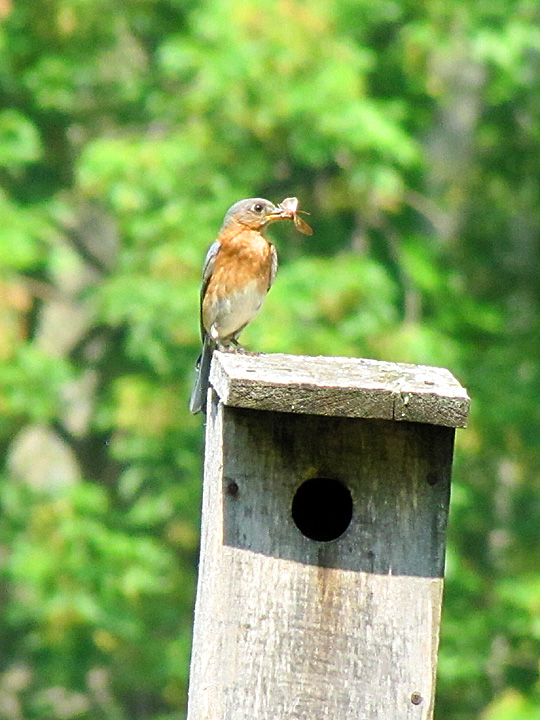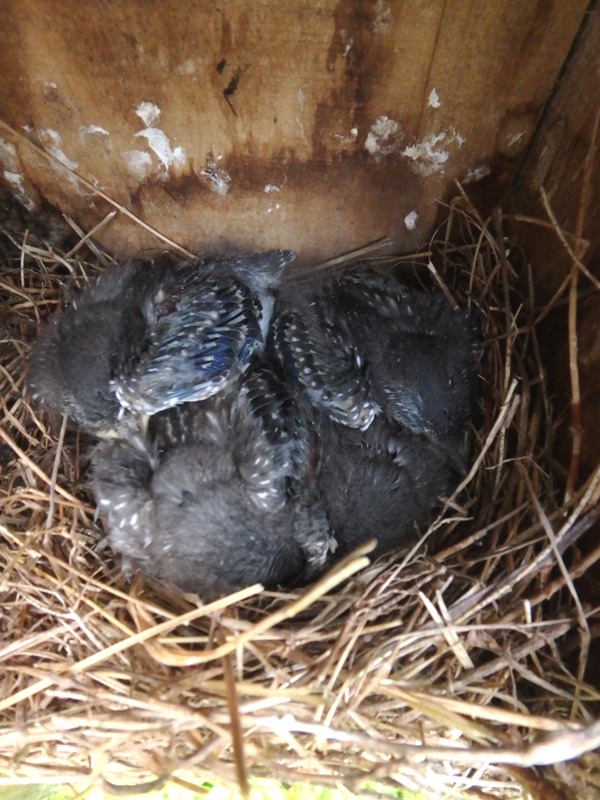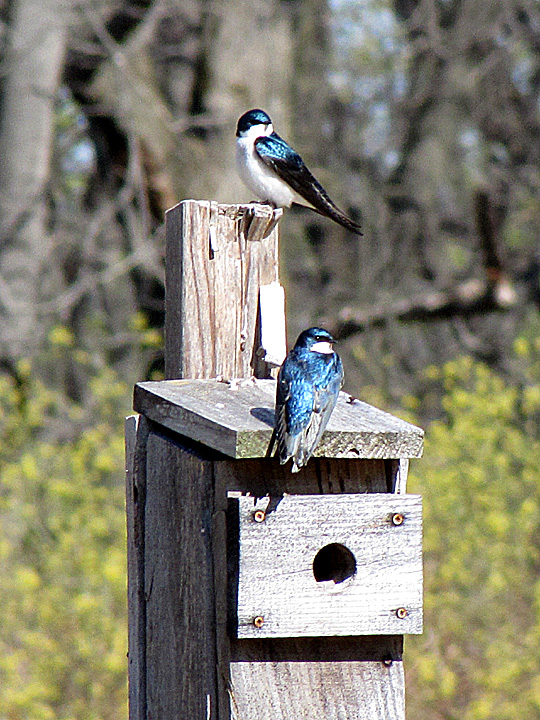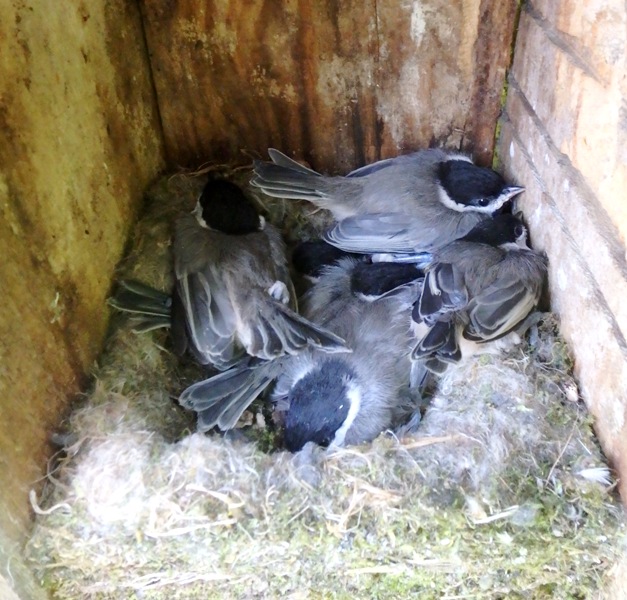Nest Box Recap
by Tim Burris, Mariton Preserve Manager.

Eastern Bluebird. Photo by Carole Mebus.
I recently finished compiling the data from the nest boxes from Natural Lands’ Pennsylvania preserves. I received reports from 17 different preserves. Several Force of Nature volunteers, as well as local preserve volunteers, and staff dedicated hundreds of hours to regularly monitor the boxes. Volunteers (especially the Force of Nature folks) have really allowed Preserve Managers to monitor more nest boxes than ever before.
In 2019, we had 488 boxes being monitored, and 375 of those boxes were used by different bird species. As I study the big spread sheet there are lots of things that catch my interest. The first report of nesting activity was for Bluebirds on April 1 at Summerhill Preserve, but Binky Lee had activity on 4/02, and ChesLen on 4/03. In truth, it was just a matter of which day specific monitors checked their boxes that week. For decades I have tried to start checking boxes in February, but I don’t expect to see nesting at that time. By checking early, it gives me time to repair, replace and clean out boxes before the birds get serious about home scouting – and I’ve seen nesting activity start in March.
The original purpose of nest boxes was to help restore Eastern Bluebirds, which saw drastic population declines in the 50’s and 60’s. There has been an increase in Bluebirds, but we don’t mind if other species also use the nest boxes. Tree Swallows, House Wrens, Chickadees and Tufted Titmice are other cavity nesting species that also eat insects. Let’s face it, the habitats are different on the different preserves and different bird species do better on one preserve compared to another.

Bluebird Fledglings.
This past season there were 134 Bluebird nests in the monitored boxes. Those nests netted 402 bluebird fledglings. That is not a great fledgling rate. From my own experience at Mariton, and from reading some of the Monitors’ notes, we lost a few early broods this spring. Bluebirds tend to be the first species that nest, and sometimes the weather turns bad, and they lose their eggs or chicks. The spring of 2019 was especially wet and it wasn’t good for young hatchlings.

Tree Swallows. Photo by Carole Mebus.
Tree swallows nest later and did better with 205 nests and 804 fledglings. Tree Swallows prefer the expansive fields found at some of Natural Lands’ preserves. Our records reflect that as we have been monitoring more preserves with grassy fields, we are getting more Tree Swallows. Personally, at Mariton I have seen Tree Swallow numbers go down as the fields have become shrubbier and less grassy.

Chickadee fledglings.
As Mariton’s fields have changed, I have seen more Chickadees using boxes. Preserves with smaller fields are also seeing more Carolina or Black-capped Chickadees using their boxes. Preserve wide, there were 7 Chickadee nests and 30 fledglings. This was another species hampered by a wet spring, and I had a couple nests that never produced young. I also had 7 Tufted Titmice leave one of Mariton’s boxes.
House Wrens have really taken off since FON volunteers have been monitoring. This past year we had 95 nests and 420 fledglings. You can put a soup can on a step and a House Wren will build a nest in it. They don’t like the big fields, but if there are boxes on the edge of the meadows, they will take over.
I haven’t had Carolina Wrens use a nest box in ages, but this year, I had a nest, and so did Gwynedd Wildlife Preserve. This species definitely uses cavities, but I find that they prefer horizontal cavities.
A Monitor checked Wood Duck Boxes at ChesLen and had 10 Wood Ducks hatch out. Not included in the reports are Kestrels, Great-crested Flycatchers, Screech Owls and a few other species that are a little tougher to monitor regularly.
Thanks to everyone that monitored and kept great records. While it is nice to know that the nest boxes help birds, I don’t think the birds read the reports or care about statistics. In the end, we are doing this for the birds, although it makes me (and the other monitors) feel all warm and fuzzy.
